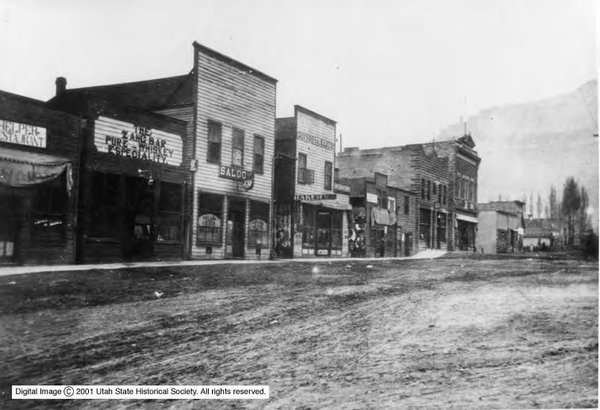Dublin Core
Title
Description
The discovery of industrial-grade coal in 1882 at Castle Gate in Price Canyon brought investment and workers from outside Utah into Emery County. With this influx of miners from Latin America, Europe, and Asia, the small community of Helper at the base of the canyon became the most ethnically diverse community in Utah at the time. Coal mining arrived not long after the first Mormon families immigrated to the area in 1878, but the culture of mining towns was markedly different from the agricultural communities already settled in the southern end of the county.
For the Mormon settlers of the Price Valley, farming was a way to create a permanent community made up of families. By contrast, mining attracted a different demographic: young, single, immigrant men, many of whom were Catholic. Mining companies – always afraid of labor organizing – tended to hire a constant influx of new workers. Regular turnover in mining jobs kept workers from assimilating into the predominant Mormon culture.
Helper, along with the nearby town of Price, was infamous for saloons and brothels: places where young men could spend some money in their leisure time. While these towns were also home to many families, businesses, and churches, the agricultural towns farther south saw only the unsavory social corruption of extractive industry. The mining towns, for their part, felt the county government in Castle Dale ignored their interests.
The solution to the growing dilemma came with new county boundaries in 1894. Carbon County was born – named for the primary element in its major industry, coal – and Emery County was officially separated into two entities. While this solution was unusual, the question of whether economic development should be agrarian or industrial was one that resonated throughout the state. Through the redrawing of political boundaries, these disparate communities of Carbon and Emery Counties developed on their own terms, rather than having to fully reconcile their differences.Creator
Source
_______________
See Floyd A. O’Neil, “Victims of Demand: The Vagaries of the Carbon County Coal Industry” in Carbon County: Eastern Utah’s Industrialized Island, ed. Philip F. Notarianni (Salt Lake City: Utah State Historical Society, 1981); Philip F. Notarianni, “Utah’s Ellis Island: The Difficult ‘Americanization’ of Carbon County,” Utah Historical Quarterly 47 no 2 (1979).

